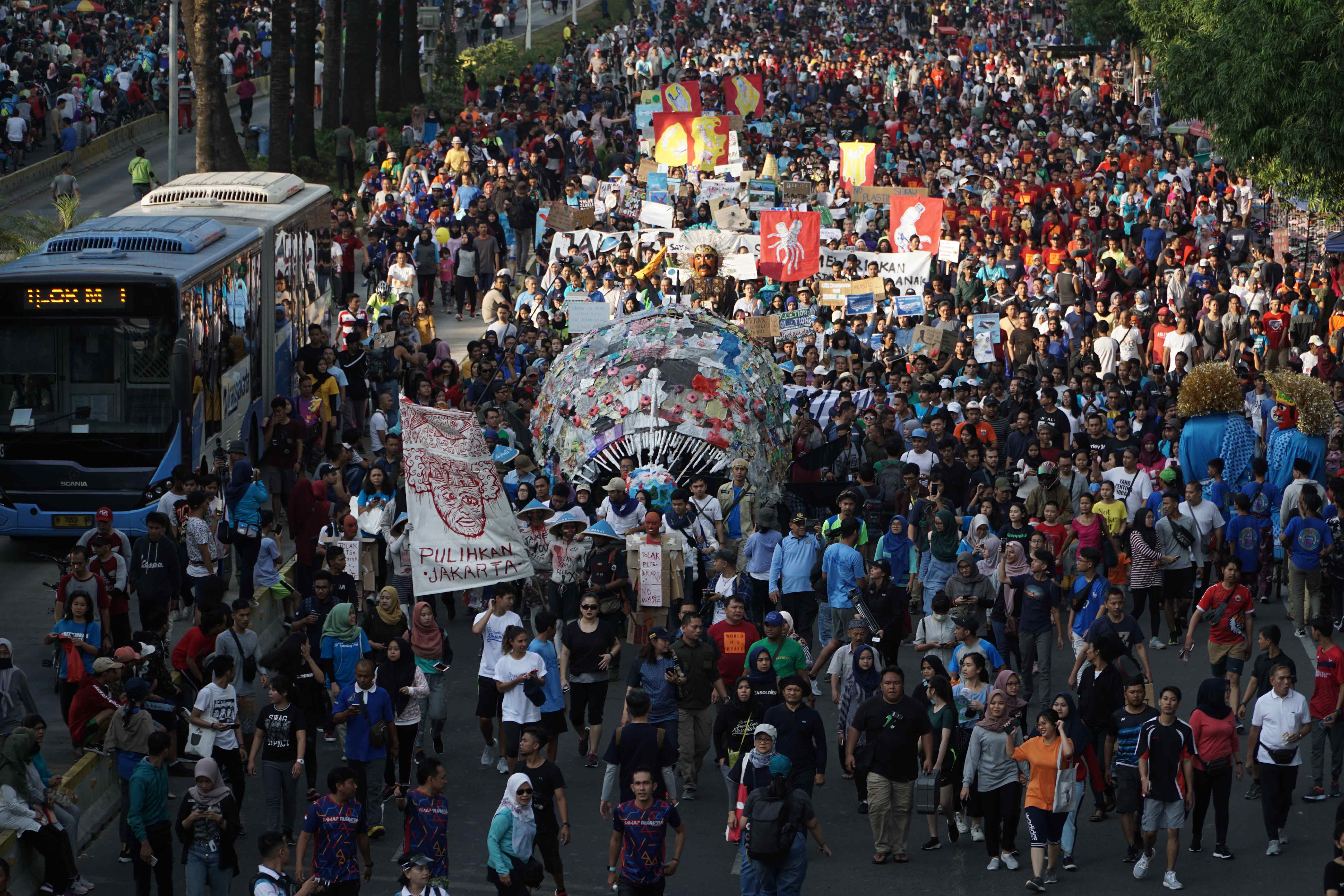In early August 2021, the Intergovernmental Panel on Climate Change (IPCC) released its Sixth Assessment Report (AR6). At around 3,000 pages, it’s one of the most comprehensive reports about the evidence and science behind climate change. The message is loud and clear: humans are the main contributors to global warming, and unless we collectively take action to limit our carbon dioxide emissions, the effects of climate change will increase in the coming years, while several parts of the world will become inhabitable.
In response to the report, Kopernik internally discussed the effects of climate change on last mile communities and how our work can mitigate these effects. We mapped out climate change mitigation efforts in our previous and current projects and discussed opportunities for improved climate change mitigation projects, along with steps we can take to minimize our carbon footprint while completing them.
The IPCC report and discussion at Kopernik made me realize that the situation is worse than I thought, leaving me distraught at the rate of climate change we are experiencing today. Despite all these worries, I found myself yet again in a coffee shop the following day, seeking refuge from the scorching Balinese sun, ordering an iced coffee in a plastic cup with a plastic straw. I was suddenly forced to reflect on my behavior that contributes to global warming. There I was, still using single-use plastic that harms the environment, still using my motorcycle that consumes fossil fuels everywhere I go, still not sorting my waste… the list goes on.
Before reading the AR6, I was aware of climate change. I knew that human behavior is the main cause of it and that changes in our behavior can slow the rate of global warming. But why am I not compelled to make more drastic changes to my lifestyle and behavior to mitigate climate change? Why hasn’t my understanding of global warming pushed me to take more radical actions?
Data shows that generally people know that lifestyle changes are necessary to mitigate climate change.1 But it feels like there is some kind of gap between people’s understanding of climate change and taking real actions to prevent global warming.
 Human behavior is significant in responding to climate change.
Human behavior is significant in responding to climate change.
The root of the problem with communicating climate change is that it does not pose an immediate threat to us. The most appropriate way to illustrate this is by using the metaphor of boiling frog syndrome. Boiling frog syndrome is a scenario in which a frog put in a pot of boiling water will immediately jump out to avoid danger. But when a frog is put in a pot of tepid water that is slowly brought to the boil, the frog will remain in the water until it’s cooked to death. It’s the same with climate change: we don’t see it as a genuine threat because it’s happening too slowly for our senses to register it as an immediate threat.
Climate change scientists have long tried to tackle this syndrome by presenting more information and hard evidence that climate change is happening in front of our eyes. However, humans are deeply connected to our identity and social affiliations, and so we easily discard any empirical information that does not align with our purposes. Presenting more information about climate change cannot push people to change their behavior, and this is a problem.
So, how can we make people engage in more environmentally friendly behavior?
It’s a difficult question to answer, but to do so we need to look at how humans pass down wisdom and information between generations — I’m talking about stories.
A story is a specific way of presenting information through a character, plot, and setting. Storytelling is one of the oldest modes of communication, and our brain is wired to be more in tune with stories that spark our imagination. Stories shape our preferences and help us organize incoming information so we can try and make sense of the world. The method of telling stories to trigger certain behaviors has been widely applied in areas like religion, marketing, and even public policy. But can stories influence our behavior to mitigate climate change?
Research into the effectiveness of stories to influence people’s perspectives and behavior in climate change mitigation is still limited, but the consensus seems to be that storytelling is more effective than providing data and graphs showing the rate of climate change.2
As effective as stories can be, not all can be used to influence behavior to mitigate climate change. From current research, here is what we know so far:
First, the stories must be emotional,3 and contain clear characteristics (i.e. character, plot, and setting). The plot must be about how characters navigate climate change and its negative consequences.
A concrete example of this kind of story is the plot of the Pulau Plastik documentary. The feature-length documentary follows three relatable protagonists — musician Gede Robi and environmental activists Tiza Mafira and Prigi Arisandi — on their fight against single-use plastic pollution in Indonesia. The story of the plastic pollution crisis is told from three different angles: science, activism, and the arts.

Pulau Plastik leverages storytelling to change people’s behavior towards the climate crisis.
Second, characters matter. 4 A story’s characters are responsible for delivering the messages we want to convey. When an audience member relates to a character, they are more likely to follow the characters’ behavior. Therefore, a story about a teenage girl sorting her waste could inspire young people to sort their waste as well. A story about a climate change denier whose perspective changes after being face-to-face with a forest fire could also change the minds of others who are skeptical of climate change.
After reflecting on my behavior that is still insufficient to play my part in mitigating climate change, I realized that I have not been listening to the right story. Although the characters exist, I was not able to find many whose behavior I can follow. But perhaps this means it’s time to craft my own story about climate change, and the changes I need to make in my life to help slow down global warming. Perhaps this will be the story you need to hear today — or think about in the future.Regardless, this has been a story about my own reflections on the state of the world we live in today.
Individual level behavior is also not enough and major changes also need to be made at policy/corporate levels. Being part of the Kopernik team is a good starting point to craft my own bigger story, as I am fortunate to work on a few lean experimentation projects focusing on climate change mitigation. One of them, for example, is a waste sorting experiment in Sayan Village, Ubud, Bali, where my team and I are testing whether reward and sanction policies can urge people to change their behavior in managing their waste. If successful, this experiment can become a story of one community that inspires others to implement a similar method in waste management.
It is now time to move from commitment to actions. As Kopernik is working with various partners on climate change mitigation-related projects to support vulnerable communities, I also believe collaboration in crafting meaningful stories has become more important than ever. As an organization, Kopernik believes in collective impact and seeks to work with like-minded partners to find what works in solving social and environmental challenges. If you are interested in making a collective impact and supporting vulnerable communities in Indonesia, please get in touch.
2Kahan, Dan M., et al. "The polarizing impact of science literacy and numeracy on perceived climate change risks." Nature climate change 2.10 (2012): 732-735.
3Morris, Brandi S., et al. "Stories vs. facts: triggering emotion and action-taking on climate change." Climatic change 154.1 (2019): 19-36.
4Jones, Michael D. "Cultural characters and climate change: How heroes shape our perception of climate science." Social Science Quarterly 95.1 (2014): 1-39.


